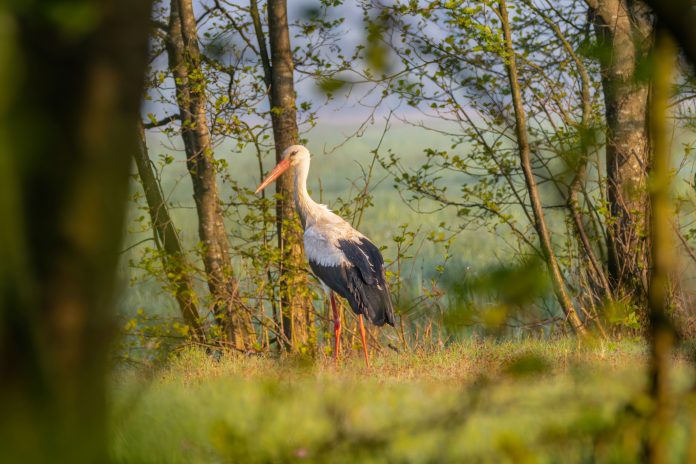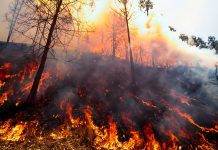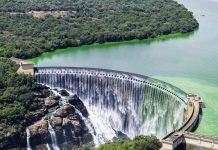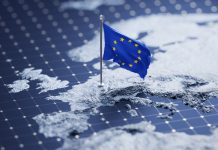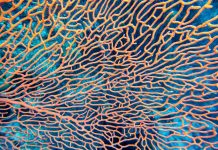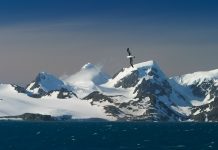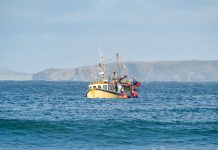From urbanisation to climate change, the welfare of wildlife populations is increasingly under threat. Open Access Government provides an overview of the challenges and opportunities associated with wildlife conservation in Europe
A report by the World Wide Fund for Nature (WWF) in 2022 provided alarming statistics on the state of global wildlife populations. Since 1970, there has been an average decline of 69% in wildlife populations, including mammals, birds, amphibians, reptiles, and fish. (1) The report featured data from Europe, which had one of the lowest scores for ‘biodiversity intactness’. Despite conservation efforts, the region continues to experience a decline in wildlife populations.
Safeguarding wildlife populations is extremely important, not only for the wellbeing of our planet but for future generations, too. Curbing biodiversity loss is essential for ensuring food security, reducing poverty, and promoting more inclusive and fair development. Centuries of industrialisation, urbanisation, and animal agriculture, among other factors, have contributed to the decline in biodiversity and species in most regions. According to the European Environment Agency (EEA), which monitors the state of nature based on the data submitted under nature directives, only around 27% of assessed species have a good conservation status. (2)
The key issues affecting wildlife populations
The welfare of wildlife across the globe is affected by multiple factors, most predominantly human-induced climate change. Rapid urbanisation, population growth and ongoing pollution of water and soil have affected habitats and ecosystems on land and sea. The impact of the climate crisis is becoming increasingly evident as severe flooding, wildfires, diseases, and droughts are being featured more frequently in the media. The National Wildlife Federation has noted that as a result of the large amount of carbon dioxide released from burning fossil fuels, the ocean’s surface seawater has become 0.1 units more acidic since 1750. If no action is taken to reduce fossil fuel emissions, it is projected to become even more acidic, dropping by another 0.5 units by 2100. These changes would take tens of thousands of years to reverse. Scientists have also determined that most of the observed warming is very likely caused by the burning of coal, oil, and gas. (3) In Europe, as in the rest of the world, climate change is heavily impacting marine life; ecosystems and biodiversity are in a state of degradation. Recent research indicates that most species are in a degraded state across Europe’s seas. (4)
The European Parliament named the following as key drivers of biodiversity loss in the region: Changes in land use (e.g. deforestation, intensive monoculture, urbanisation); direct exploitation such as hunting and over-fishing; climate change; pollution and invasive alien species. (5)
In the UK alone, intensive farming has led to around one in six species being at risk of extinction. This risk is even higher for certain groups, with 43% of birds, 31% of amphibians and reptiles, 28% of fungi and lichen, and 26% of terrestrial mammals facing the threat of extinction. (6)
Without rapid action, continued rising temperatures will lead to the loss of vital habitats such as wetlands. Rising sea levels will overwhelm beaches and marshes, causing erosion on both coasts and diminishing habitats for coastal wildlife.
The rise in average temperatures and alterations in precipitation patterns will allow certain invasive plant species to expand into new regions. Insect infestations will become more severe, with pests capitalising on weakened plants due to drought. Pathogens and their hosts that thrive in warmer temperatures will also spread to new areas. (3)
Curbing biodiversity loss and protecting wildlife populations
Although European countries have introduced regulations and schemes to protect animal and plant populations, robust action is needed to ensure the long-term conservation of their habitats. To address the impact of climate change and prevent further loss of biodiversity and degradation of ecosystems in Europe, the European Environment Agency emphasises the need for increased funding and investment in initiatives that support nature. Currently, governments worldwide allocate billions of euros each year to economic projects that ultimately have a negative impact on biodiversity. Economic incentives prioritising short-term exploitation of natural resources over long-term conservation and restoration of nature worsen the problem, it says. In addition to introducing regulations that protect species in the EU, the EEA notes the need for changes in the metrics for measuring economic success. Instead of traditional methods of measuring economic growth such as GDP, an inclusive approach that considers production, human and nature capital is crucial for sustainable growth within the limits of the planet. Redirecting subsidies that negatively impact the environment towards conservation efforts and promoting national development policies that preserve nature will help to ensure the sustainability of natural resources. (7)
According to the WWF, sustainable financing for conservation areas in the context of wildlife conservation means that investment decisions are made with consideration of environmental and social impacts, with an understanding that successful conservation initiatives require time and investment. (8)
Among the EU’s efforts to protect nature and reverse the degradation of ecosystems is the biodiversity strategy for 2030. Its key objectives, as part of the COVID-19 recovery, will be to support the resilience of societies to future threats such as climate change, forest fires, food insecurity and disease outbreaks (including the protection of wildlife and combatting illegal wildlife trade). (9) Part of the 2030 strategy also comprises the restoration of at least 25,000km of free-flowing rivers by removing barriers, constructing bypasses for migrating fish and re-establishing sediment flow.
The Commission proposed the EU’s first-ever Nature Restoration Law, which includes long-term objectives to restore nature in the EU’s land and seas. This law also sets binding restoration targets for specific habitats and species. These targets outlined, it says, should cover a minimum of 20% of the EU’s land and sea areas by 2030 and all ecosystems in need of restoration by 2050. (10)
Restoring nature in Europe requires a diverse set of approaches, according to the EEA. These approaches include removing barriers on rivers, rewilding, rethinking agricultural systems, and transforming critical systems, including those related to food and energy production and consumption. Given the high socioeconomic costs associated with biodiversity loss, we cannot afford to be inactive when it comes to protecting the future of people and the planet.
References
- https://wwfeu.awsassets.panda.org/downloads/lpr_2022_full_report.pdf
- https://www.eea.europa.eu/publications/state-of-nature-in-the-eu-2020
- https://www.nwf.org/Educational-Resources/Wildlife-Guide/Threats-to-Wildlife/Climate-Change
- https://www.eea.europa.eu/publications/how-climate-change-impacts
- https://www.europarl.europa.eu/topics/en/article/20200109STO69929/biodiversity-loss-what-is-causing-it-and-why-is-it-a-concern
- https://www.ceh.ac.uk/news-and-media/news/landmark-report-shows-uk-terrestrial-wildlife-continuing-decline
- https://www.eea.europa.eu/en/topics/in-depth/sustainable-finance/unlocking-finance-and-investments-in-nature
- https://www.worldwildlife.org/stories/why-tiger-landscapes-need-sustainable-financing-now
- https://environment.ec.europa.eu/strategy/biodiversity-strategy-2030_en
- https://environment.ec.europa.eu/topics/nature-and-biodiversity/nature-restoration-law_en
Open Access Government
editorial@openaccessgovernment.org
www.openaccessgovernment.org
Twitter
LinkedIn

